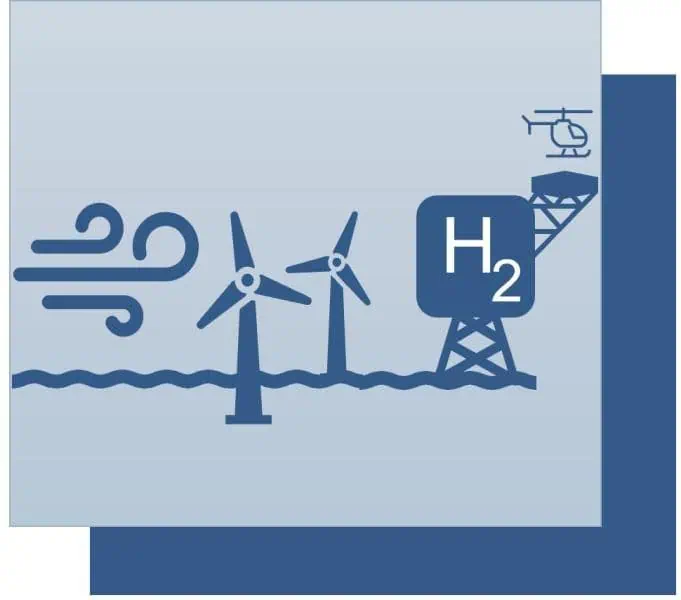One of the biggest challenges of today’s society is to prevent the global warming. To achieve this target, 196 Nations including Germany, signed the Paris Agreement1 in 2015 to limit the global warming by 2°C compared to pre-industrial levels. Each country is responsible for the compliance and the establishment of individual carbon reduction strategies. For example, Germany aims to become climate neutral by the year of 2050. Therefore, Germany already plans to implement 20 GW of offshore wind capacity3 and 5 GW of hydrogen capacity until 2030.
Green hydrogen plays an important role in decarbonization of multiple sectors e.g. mobility, energy and industry. For industrial production sites, green hydrogen can reduce greenhouse gas emission significantly and make it traceable, e.g. by replacing the fossil fuels used in heat generation. On the other hand, the demand of centralized industrial production sites for the long-term, secured supply of hydrogen can be covered by large offshore wind farms (OWF). Consequently, green hydrogen and offshore wind power can be considered as key factors to assist Germany achieve the climate goals. The Windenergie-auf-See-Gesetz3 (Wind Energy at Sea Law) and the National Wasserstoffstrategie4 (National Hydrogen Strategy) paves the way for the alternative technologies in offshore energy converting and transportation.
Therefore, information regarding the cost of production and transportation of green hydrogen to the centralized industrial production sites is necessary.
Click below for the full Whitepaper!












